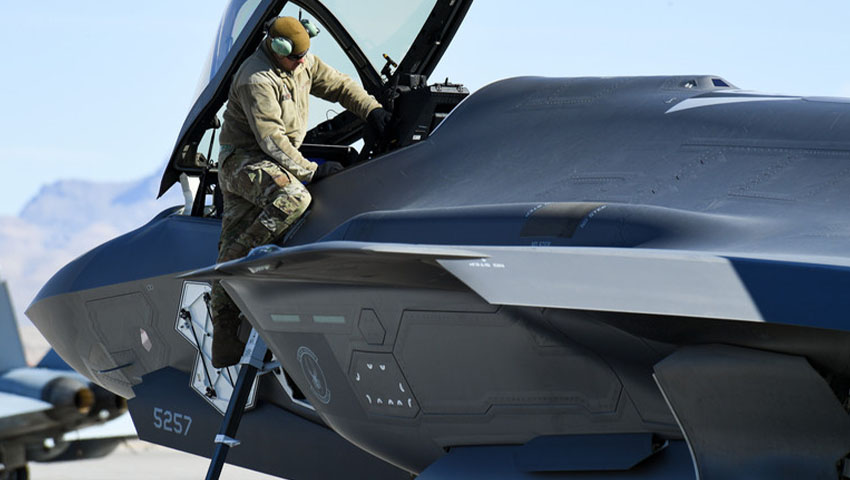As capable as the F-35A is proving itself to be on the battlefield – it can be just as capable in reliability and quick combat ‘turns’ when maintainers leverage the synergy designed into the maintenance systems – something the US Air Force is in the process of developing and perfecting.
To continue reading the rest of this article, please log in.
Create free account to get unlimited news articles and more!
Colonel Michael Miles, 388th Maintenance Group commander has been running maintenance operation for the past three years, overseeing the efforts needed to keep the US Air Force's first combat capable F-35A wing airborne and lethal.
While there have been notable program-wide challenges with F-35A sustainment and the Autonomic Logistics Information System, improvements have been made with continuous system updates and more are in the works, Col Miles said.
It’s not the individual programs, but the concept – synergy-centered maintenance – that is the core of what makes fifth-generation sustainment unique, he said.
"The average Airmen, officer or enlisted, probably doesn’t know that we have more F-35s in the Air Force today than any other fighter except the F-16 (Fighting Falcon). They’ll blink, and their next assignment will be at an F-35 base, if they’re not there already. We really need to educate them on the capabilities and the synergy this maintenance system provides. It's like nothing else in the Air Force inventory," Col Miles explained.
He describes the prognostics health management (PHM) system like a patient going to a doctor for a regular exam. The patient may have high-blood pressure that bears monitoring. The doctor wants the patient to come back in a few days for a check-up. Medication may be required, but the initial reaction isn’t to put the patient on bed rest.
Col Miles added, "To me, the most valuable part of the maintenance system is the prognostics health management capabilities. The ability to look at what the jet is reporting on its health and make maintenance decisions early, before something breaks, is a huge leap in maintenance management from previous aircraft."
If the issue is something that bears more than monitoring, then the system can provide the recommended fix in the associated electronic joint technical data, create a work order and even request the proper parts be sent to the unit.
Meanwhile, while each squadron is tracking the health of its fleet, engineers at the F-35 program level are constantly looking at the most commonly-reported issues, delivering solutions and adjusting the supply chain where needed.
Col Miles explained that this is the synergy that is the key to continued progress in F-35A maintenance, and maintainers will learn to trust the system as the program continues to mature.
That trust will continue to improve performance. Currently, the 388th Fighter Wing is generating a mission capable rate of more than 80 per cent, which means that they can generate enough F-35A sorties to support the operational demands of the wing.
Because the 388th FW is meeting that "operational threshold", the F-35 program as a whole could, in theory, shift logistics focus to other units who may not be meeting that threshold or who are just standing up.
People are also a large part of the mission-capability equation, said Col Miles. As new maintainers, and maintainers transitioning from legacy platforms, learn the most efficient ways to leverage the synergy designed into the F-35 maintenance concept, the platform's reliability should only increase across the program, he explained.
For the RAAF, the F-35A's combination of full-spectrum, low-observable stealth coatings and materials, advanced radar-dispersing shaping, network-centric sensor and communications suites – combined with a lethal strike capability – means the aircraft will be the ultimate force multiplying, air combat platform.
The F-35A – the variant chosen by the RAAF – will have a projected life of 30 years in service.
Ten nations are currently flying F-35s, including the US, UK, Italy, Norway, Israel and Japan. The first of Australia’s F-35A aircraft are now based on home soil after a period of training and development at Luke Air Force Base in Arizona, plus an epic Pacific Ocean crossing in December 2018.
Over the coming years, Australia will purchase 72 of the advanced fifth-generation fighter aircraft as part of the $17 billion AIR 6000 Phase 2A/B program – which is aimed at replacing the ageing F/A-18A/B Classic Hornets that have been in service with the RAAF since 1985.

 Login
Login







